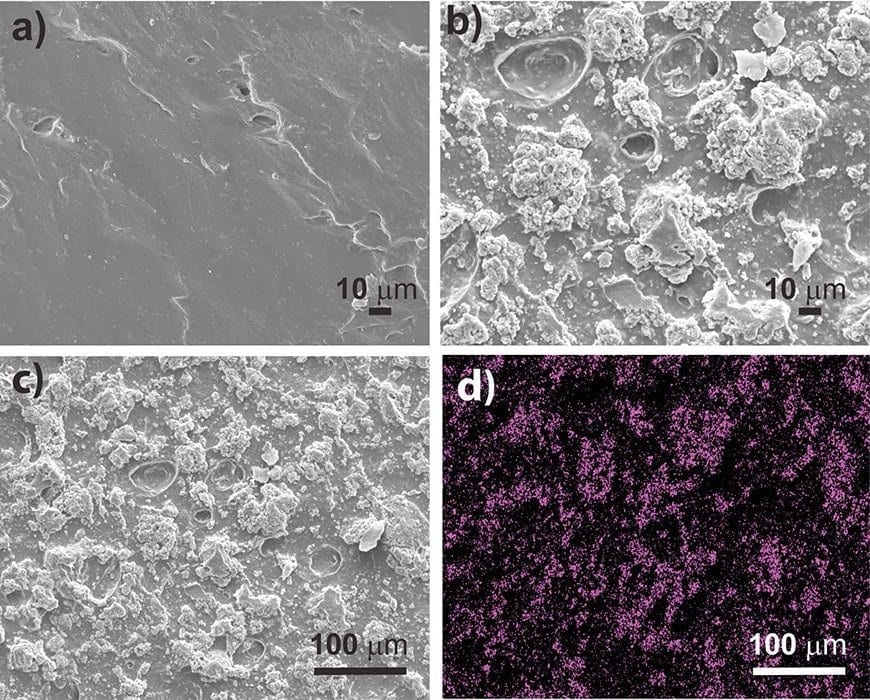
Placement of copper objects in intensive care unit (ICU) hospital rooms reduced the number of healthcare-acquired infections (HAIs) in patients by more than half
Placement of copper objects in intensive care unit (ICU) hospital rooms reduced the number of healthcare-acquired infections (HAIs) in patients by more than half, according to a new study published in the May issue of Infection Control and Hospital Epidemiology, the journal of the Society for Healthcare Epidemiology of America, in a special topic issue focused on the role of the environment in infection prevention.
In the United States, HAIs result in 100,000 deaths annually and add an estimated $45 billion to healthcare costs. HAIs often contaminate items within hospital rooms, allowing bacteria to transfer from patient to patient. Common microbes include methicillin-resistant Staphylococcus aureus (MRSA) and vancomycin-resistant Enterococcus (VRE). While several strategies have been developed to decrease HAIs, few have been clinically proven to reduce the spread of these infections. The researchers tested the capability of copper surfaces to reduce environmental contamination of these germs and thereby decrease HAIs in patients. Copper surfaces have an inherent ability to continuously kill environmental microbes on these surfaces.
The study was performed from July 12, 2010 to June 14, 2011 at three medical centers including the Medical University of South Carolina, the Memorial Sloan-Kettering Cancer Center, and the Ralph H. Johnson Veterans Affairs Medical Center. Patients who were admitted to the ICU of these hospitals were randomly assigned to receive care in a traditional patient room or in a room where items such as bed rails, tables, IV poles, and nurse’s call buttons were made solely from copper-based metals. Both traditional patient rooms and rooms with copper surfaces at each institution were cleaned using the same practices.
The proportion of patients who developed HAI and/or colonization with MRSA or VRE was significantly lower among patients in rooms with copper surfaces (7.1%) compared with patients in traditional rooms (12.3%). The proportion of patients developing HAI was significantly lower among those assigned to copper rooms (3.4%) compared with those in traditional rooms (8.1%).
“Patients who suffer HAIs often stay in the hospital longer, incur greater costs, and unfortunately suffer a greater likelihood of dying while hospitalized,” said Cassandra D. Salgado, MD, Associate Professor at the Medical University of South Carolina and lead author of the study. “Our study found that placement of items with copper surfaces into ICU rooms as an additional measure to routine infection control practices could reduce the risk of HAI as well as colonization with multidrug resistant microbes.”
The Latest Bing News on:
Copper objects
- Govt. asks people to donate records, rare objects on freedom struggle for museum in Chennaion April 26, 2024 at 9:04 am
Donate rare objects to Tamil Nadu museum showcasing Tamil contribution to freedom struggle in Chennai's Humayun Mahal.
- Young explorer unearths long-lost ring that's a 'God's wink'on April 26, 2024 at 4:00 am
When Matt Burton took a metal detector to his boss's farm to find relics such as a Colonial-era coin, he found a St. Paul High School ring, class of '72. He used Facebook to find the widow of the ring ...
- Upcoming D-Day memorials in France to include pieces of Battleship Texason April 25, 2024 at 5:33 pm
An artillery roller bearing and piece of steel from the hull of the warship, now moored off Galveston's Pelican Island, are soon headed back to Normandy.
- A complete guide to copper gutters: Are they right for your home?on April 24, 2024 at 5:00 pm
Copper gutters elevate your home’s aesthetics with their shine or patina. The material can last two to three times longer than aluminum or vinyl gutters. Copper is pricier and can cost twice as ...
- Copper (NYM $/lbs) Front Monthon April 24, 2024 at 8:51 am
2-Year U.S. Treasury Note Continuous Contract $101.563 0.016 0.02% 5-Year U.S. Treasury Note Continuous Contract $105.102 0.063 0.06% 10-Year U.S. Treasury Note Continuous Contract $107.828 0.094 ...
- A Metal Detectorist Discovered A 4,000-Year-Old Copper Dagger In The Forests Of Poland That Most Likely Belonged To A Warrior Of High Statuson April 24, 2024 at 6:00 am
Thousands of years ago, someone dropped a copper dagger in the forests of Poland. Now, a metal detectorist has unearthed the ancient weapon near the town of Korzenica. The 4,000-year-old dagger most ...
- Best Copper Stockson April 23, 2024 at 5:00 pm
Invest in the best copper stocks and the rest of the stock market with Interactive Brokers. Considered a “native metal” due to its natural occurrence in nature as a usable metal, copper has ...
- How to invest in copper: Your essential guide to mining the marketon April 18, 2024 at 10:00 pm
After thousands of years of use, copper continues to play a key role in the global economy and human development. That will become even more true as the energy transition away from fossil fuels ...
- Copper And Copper Work In Kashmiron April 17, 2024 at 12:56 pm
Medieval Period We have references from the geologists of the extraction of copper from the mountain on which Aishmakam in the Liddar ...
- Copper prices today: Copper is up 1.98%on April 17, 2024 at 3:26 am
The price of copper opened today at $4.37 per pound, as of 9 a.m. ET. That’s up 1.98% from the previous day’s copper price per pound and up 13.07% since the beginning of the year. The lowest ...
The Latest Google Headlines on:
Copper objects
[google_news title=”” keyword=”copper objects” num_posts=”10″ blurb_length=”0″ show_thumb=”left”] [/vc_column_text]The Latest Bing News on:
Copper surfaces
- GoggleWorks event highlights heavy metal artistson April 27, 2024 at 5:50 pm
A crowd gathered around David Fisher as he slammed his hammer into the warm copper, creating sharp lines in the metal that would transform the clear surface into what appeared to be an intricate ...
- Field Work Points to Copper Porphyry at Idaho Asseton April 25, 2024 at 11:40 am
Source: Streetwise Reports 04/18/2024 To prove this out, the Canadian company plans additional exploratory work, to commence next month. Read on to learn more about this compelling project.
- Kodiak Reports New Copper Porphyry Discovery at 1516 Zone and Final 2023 Drill Resultson April 25, 2024 at 3:31 am
April 25, 2024) - Kodiak Copper Corp. (TSXV: KDK) (OTCQB: KDKCF) (FSE: 5DD1) (the "Company" or "Kodiak") today reports a new copper porphyry discovery at the 1516 Zone located on the southern portion ...
- How much does metal roofing cost?on April 24, 2024 at 5:00 pm
Metal roofs are more expensive than asphalt ... but each layer typically has a smaller surface area than the roof on a single-story home. On a ranch home, you have one layer of roofing that ...
- Scientists develop novel liquid metal alloy system to synthesize diamond under moderate conditionson April 24, 2024 at 8:00 am
Did you know that 99% of synthetic diamonds are currently produced using high-pressure and high-temperature (HPHT) methods? A prevailing paradigm is that diamonds can only be grown using liquid metal ...
- Anglo pleased with copper's first-quarter performanceon April 23, 2024 at 2:42 am
Copper production increasing by 11% as Quellaveco achieved its highest plant throughput rate in Peru, and Collahuasi and El Soldado in Chile benefitting from higher copper grades were among the ...
- Aston Bay and American West Metals Announce Drilling and Geophysics Underway at the Storm Copper Project, Canadaon April 22, 2024 at 4:07 am
TORONTO, ON / ACCESSWIRE / April 22, 2024 / Aston Bay Holdings Ltd. (TSXV:BAY) (OTCQB:ATBHF) ("Aston Bay" or the "Company") is pleased to announce the commencement of high-impact drilling and ...
- Copper announces dates for Woodward summer camp providing access to on-mountain terrain park, coachingon April 21, 2024 at 5:00 pm
The camp provides guests the ability to hone their terrain park skills with access to an on-mountain glacier terrain park, which sits on four acres serviced by a surface lift ... are provided access ...
- Joe Soucheray: Do you really want to put more copper wiring on the streets?on April 20, 2024 at 6:50 am
If consumers want an EV, more power to them, an unavoidable pun considering the unimaginable strain on a currently inadequate electric grid if the country went all in on EVs. We’d be lucky to have a ...
- Copper mining company has eyes on massive Casa Grande siteon April 19, 2024 at 6:00 am
A mining exploration company could establish a copper mine at a massive site south of metro Phoenix. Ivanhoe Electric Inc. (NYSE-AMERICAN: IE) is exploring the potential for an underground mine called ...
The Latest Google Headlines on:
Copper surfaces
[google_news title=”” keyword=”copper surfaces” num_posts=”10″ blurb_length=”0″ show_thumb=”left”]










